With the rapid development of digital content creation, the advent of AI-powered tools has changed how content is created, refined and optimized.. One of the most potent tools at a content creator’s disposal is AI prompting, a technique that leverages artificial intelligence to produce high-quality content efficiently. But how can one experiment with AI prompting techniques to ensure effective content generation? This article dives deep into the strategies and best practices for maximizing the potential of AI in content creation.
Fast of all Understand The AI Prompting Techniques well:
AI prompting is a process where specific instructions or queries are given to an AI model to generate content. This technique relies on crafting the right prompts to guide the AI in producing desired outputs. The better the prompt, the more accurate and relevant the content generated.
Why Experiment with AI Prompts Matters
Experimentation is crucial because the effectiveness of AI-generated content hinges on the quality of the prompts. A well-crafted prompt can lead to content that is not only coherent and engaging but also aligns with SEO goals and audience expectations. On the other hand, vague or poorly structured prompts can result in content that misses the mark.
The Basics of AI Prompts:
AI prompts refers to the process of crafting specific instructions or queries that guide AI models in generating text. When you input a prompt, the AI analyzes it and produces content based on the information it has been trained on. The effectiveness of AI prompts lies in how well you articulate your requests. A well-structured prompt can lead to high-quality, relevant content, while a poorly constructed one may yield vague or off-target results. By understand what AI prompts is, you can better navigate the intricacies of AI-generated content.
Advanced AI Prompting Techniques:
Multi-Part Prompts
Multi-part prompts are an advanced technique that involves breaking down your request into several components. This approach allows you to explore a topic in greater depth. For example, you might ask, “Explain the concept of renewable energy, list its advantages, and provide examples of renewable energy sources.” your prompt in this way, you guide the AI to produce a comprehensive response that covers multiple aspects of the topic. Multi-part prompts can lead to richer and more informative content.
Role-Playing Prompts
Role-playing prompts involve asking the AI to assume a specific persona or perspective when generating content. For instance, you could prompt the AI with, “As a nutritionist, explain the benefits of a balanced diet.” This technique can help the AI generate content that is more tailored to a particular audience or context.
Scenario-Based Prompts
Scenario-based prompts are designed to place the AI in a specific situation, encouraging it to generate contextually relevant responses. For example, you might say, “Imagine you are a travel guide. Describe a day in Paris for a first-time visitor.” This type of prompt allows the AI to produce content that is rich in detail and tailored to a particular scenario. Scenario-based prompts can enhance the creativity and relevance of the AI’s output, making it more engaging for your audience.
Lack of Clarity
One of the most significant pitfalls in AI prompts techniques is a lack of clarity. Ambiguous prompts can lead to vague or irrelevant responses from the AI. To avoid this issue, ensure that your prompts are clear and straightforward. Instead of saying, “Tell me about technology,” you might specify, “Explain how artificial intelligence is transforming the healthcare industry.” You enhance the likelihood of receiving high-quality outputs.
Step-by-Step Guide to Experimental AI Prompting Techniques:
Ethical Considerations in AI Prompting
Start with Clear Objectives
Before use into AI prompting, define what you want to achieve with your content. Are you aiming to inform, entertain, or convert? Your objectives will influence the structure and tone of your prompts.
Use Specific and Detailed Prompts
The more specific your prompt, the better the AI can tailor its response. Instead of asking for a general article, specify the topic, length, tone, and even the target audience. For example, “Write a 700-word article in a conversational tone about AI prompting techniques for SEO.”
Experiment with Different Structures
Don’t hesitate to try different prompt structures. You might start with a question, a command, or a description. The structure can yield diverse content, providing you with multiple angles to approach your topic.
Adjust the Length of Prompts
Sometimes, a short and direct prompt works best; other times, a longer, more detailed prompt is necessary. Experiment with both to see which produces the most effective content for your needs.
Analyze AI Responses
After content generate , review the output critically. Does it meet your objectives? Is it engaging and informative? If not, tweak your prompt and try again. The iterative process is key to refine AI prompting techniques.
Incorporate Feedback Loops
Use feedback to improve your prompts continuously. Whether it’s from readers, SEO metrics, or your own observations, feedback is invaluable for honing the effectiveness of your AI-generated content.
Combine Prompts for Comprehensive Content
For more complex topics, consider using multiple prompts. You might start with a general overview prompt and then follow up with more specific prompts to cover subtopics in depth. This method ensures your content is thorough and well-rounded.
Make Use of AI’s Strengths
Leverage AI’s ability to process large amounts of data quickly. Use it for tasks like keyword analysis, trend prediction, or generating multiple content drafts, then refine these drafts manually for a polished final product.
Experiment AI prompting techniques is an ongoing process that requires patience, creativity, and a willingness to iterate. By prompts, you can the full potential of AI for content generation, producing articles that are not only SEO-optimized but also engaging and informative. Remember, the key to success lies in balance the power of AI with the unique insights and creativity that only a human can provide.
In conclusion, AI prompting techniques is essential for anyone looking to leverage AI for effective content generation. By understand the fundamentals of prompting, employing key techniques, and avoiding common pitfalls, you can significantly enhance the quality and relevance of the content produced by AI models. As you experiment with different prompting strategies, remember to analyze the results and refine your approach continuously.
FAQs About The AI Prompting Techniques:
What is AI prompting?
AI prompting is the practice of giving specific instructions to an AI model to generate content that meets particular criteria. This is the practice of giving specific instructions to an AI model to generate content that meets particular criteria.
What are the most effective AI prompting techniques?
Some of the most effective AI prompting techniques include specificity in prompts, providing context, using instructional prompts, and encouraging creativity through imaginative prompts. Each of these techniques can help you generate high-quality content tailored to your needs.
How can I measure the success of my AI prompting techniques?
To measure the success of your AI prompting techniques, establish key performance indicators (KPIs) such as content accuracy, engagement metrics, and user feedback. Analyzing these metrics will provide insights into the effectiveness of your prompts and help you identify areas for improvement.
Can I use AI prompting techniques for creative writing?
Yes, AI prompting techniques can be highly effective for creative writing. By using imaginative and scenario-based prompts, you can inspire the AI to generate unique narratives and engaging content that captivates readers.
Are there ethical considerations I should keep in mind when using AI prompting techniques?
Yes, ethical considerations are crucial when using AI prompting techniques. Be mindful of the potential implications of your prompts, and strive to create content that is inclusive, accurate, and free from bias. By adhering to ethical standards, you can ensure that your AI-generated content benefits your audience and upholds responsible practices.
